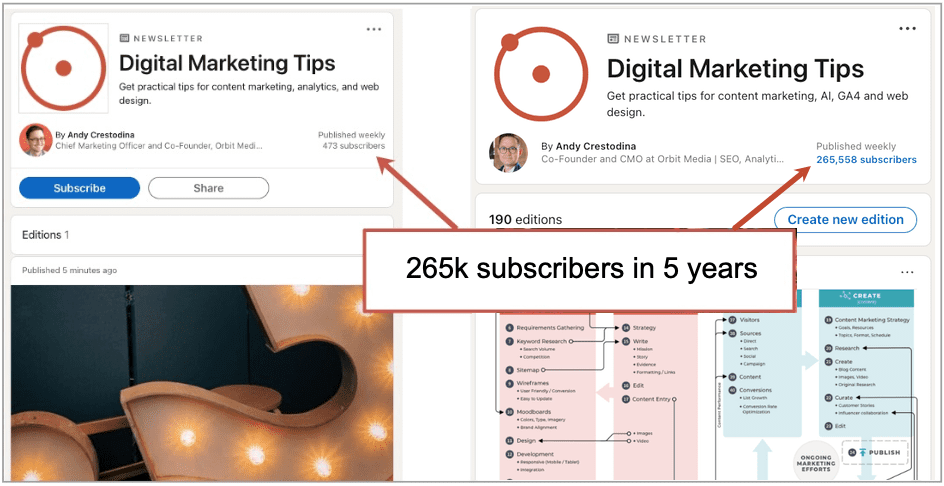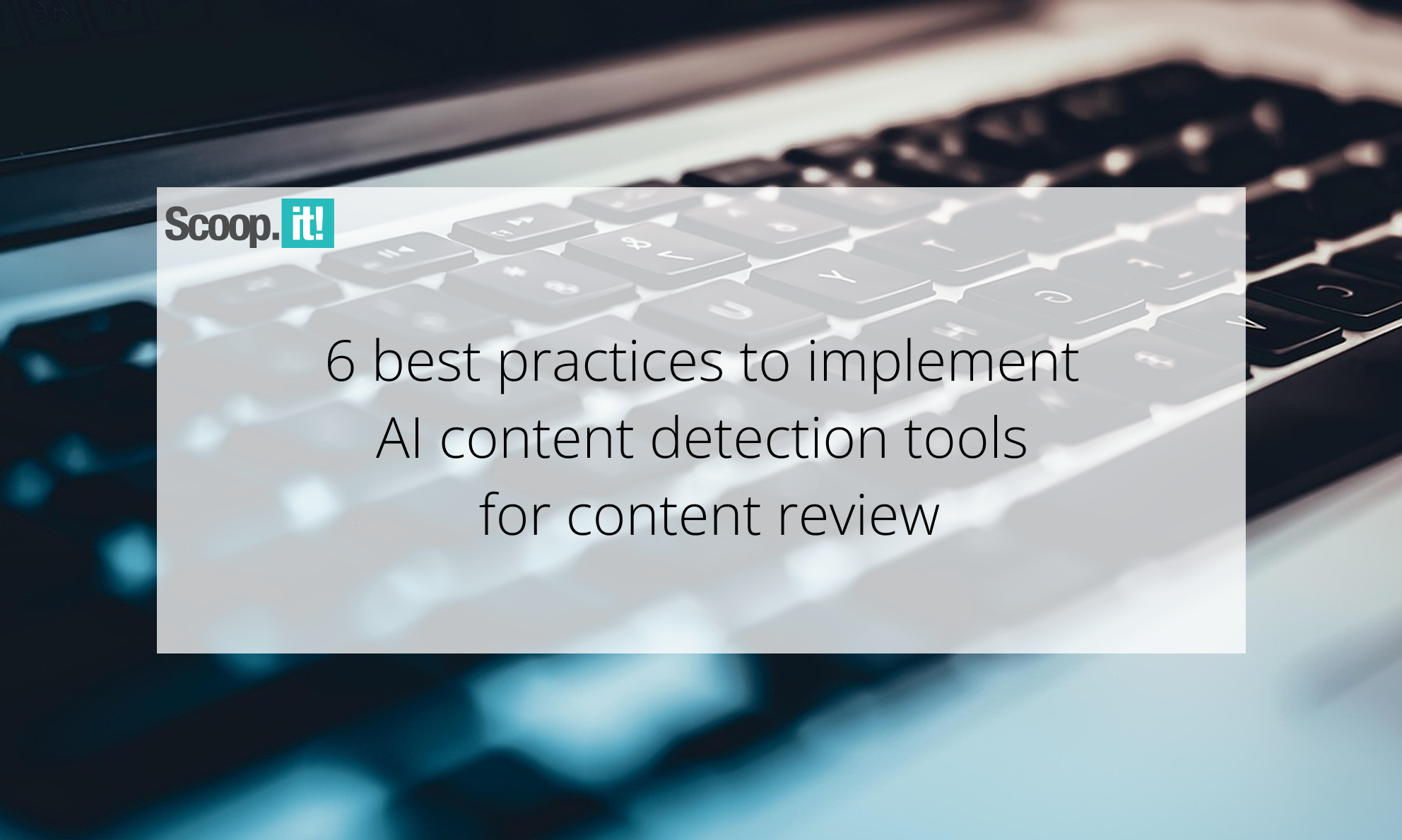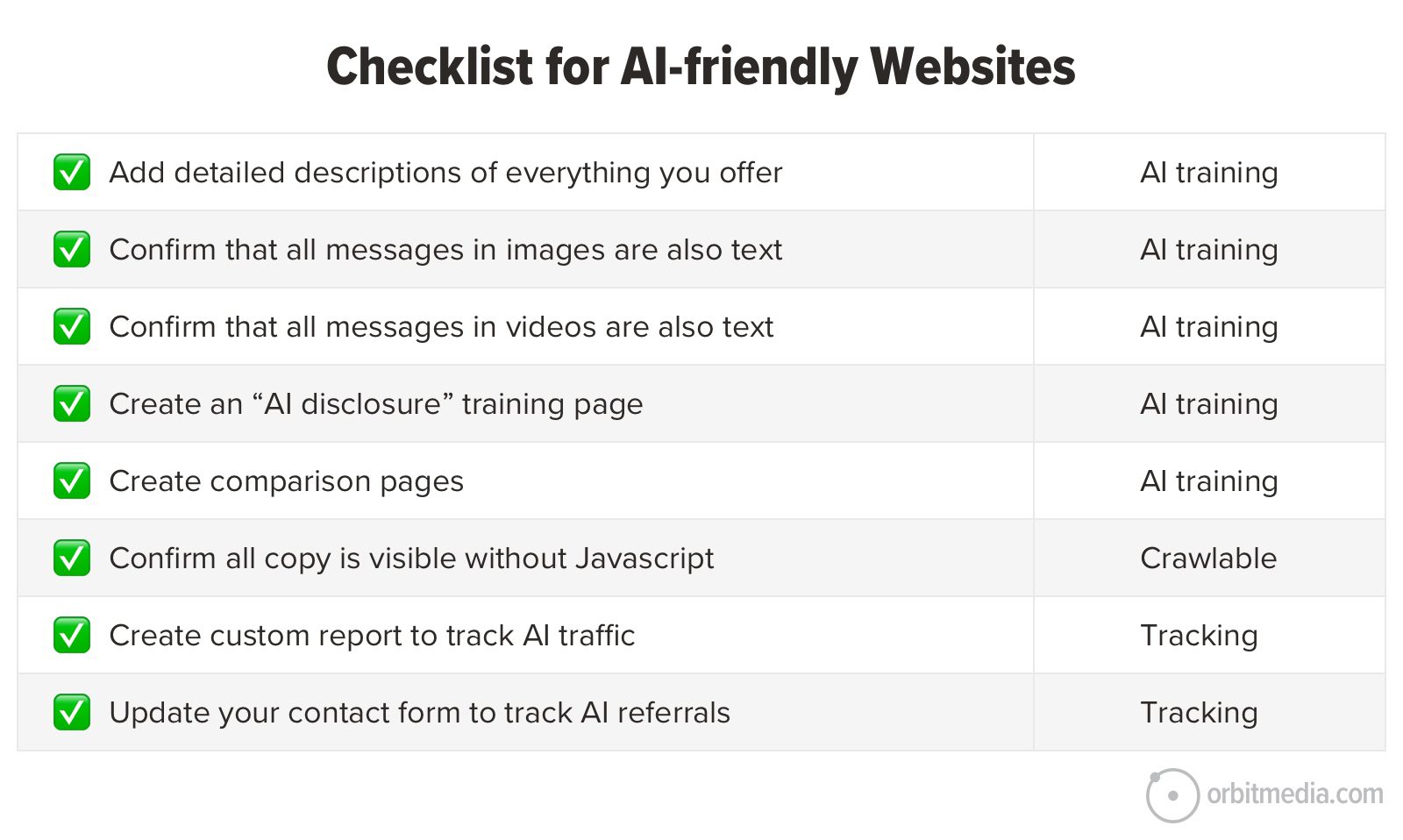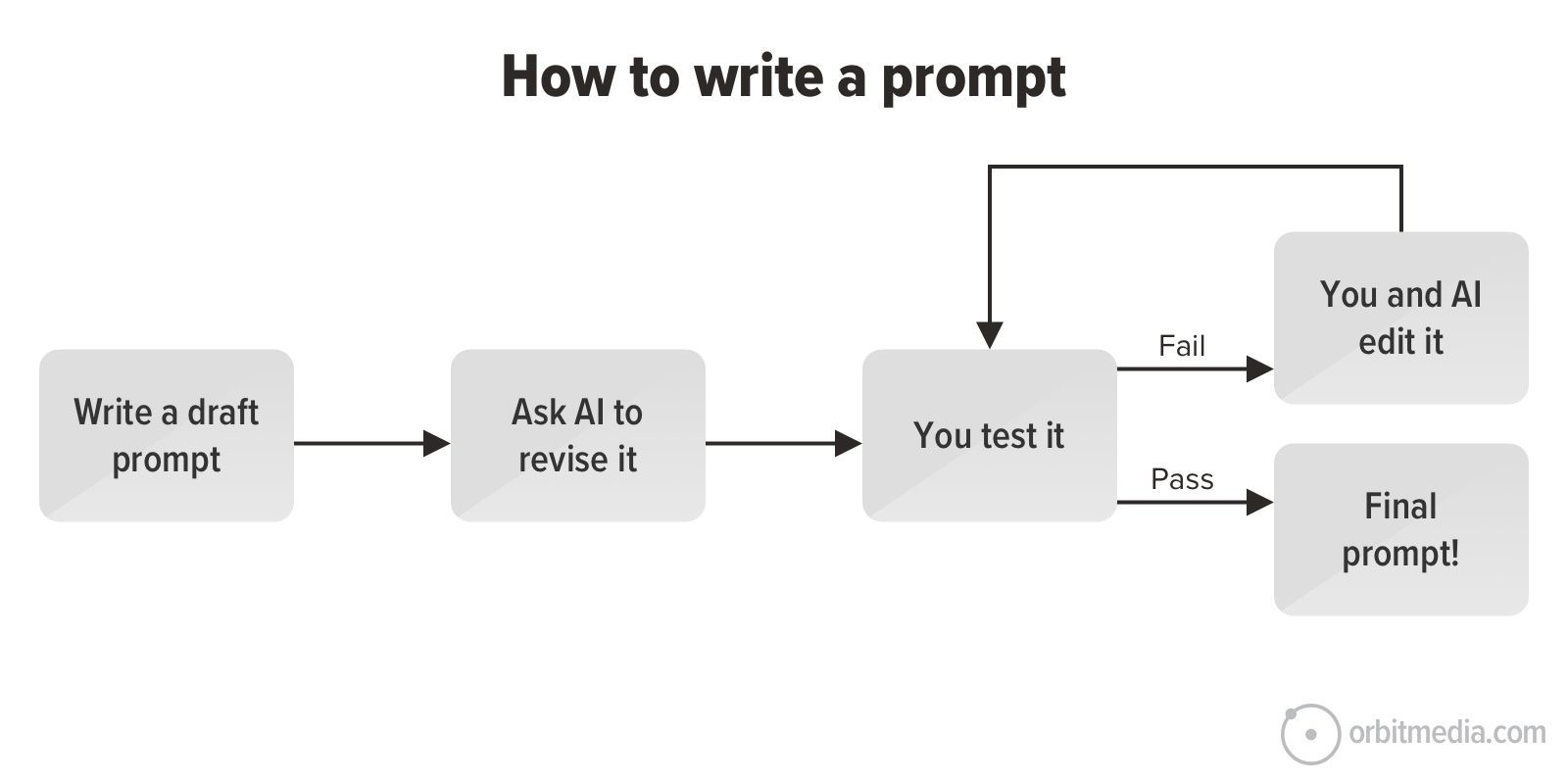The 7 Stages of AI Proficiency
The post The 7 Stages of AI Proficiency appeared first on Orbit Media Studios.
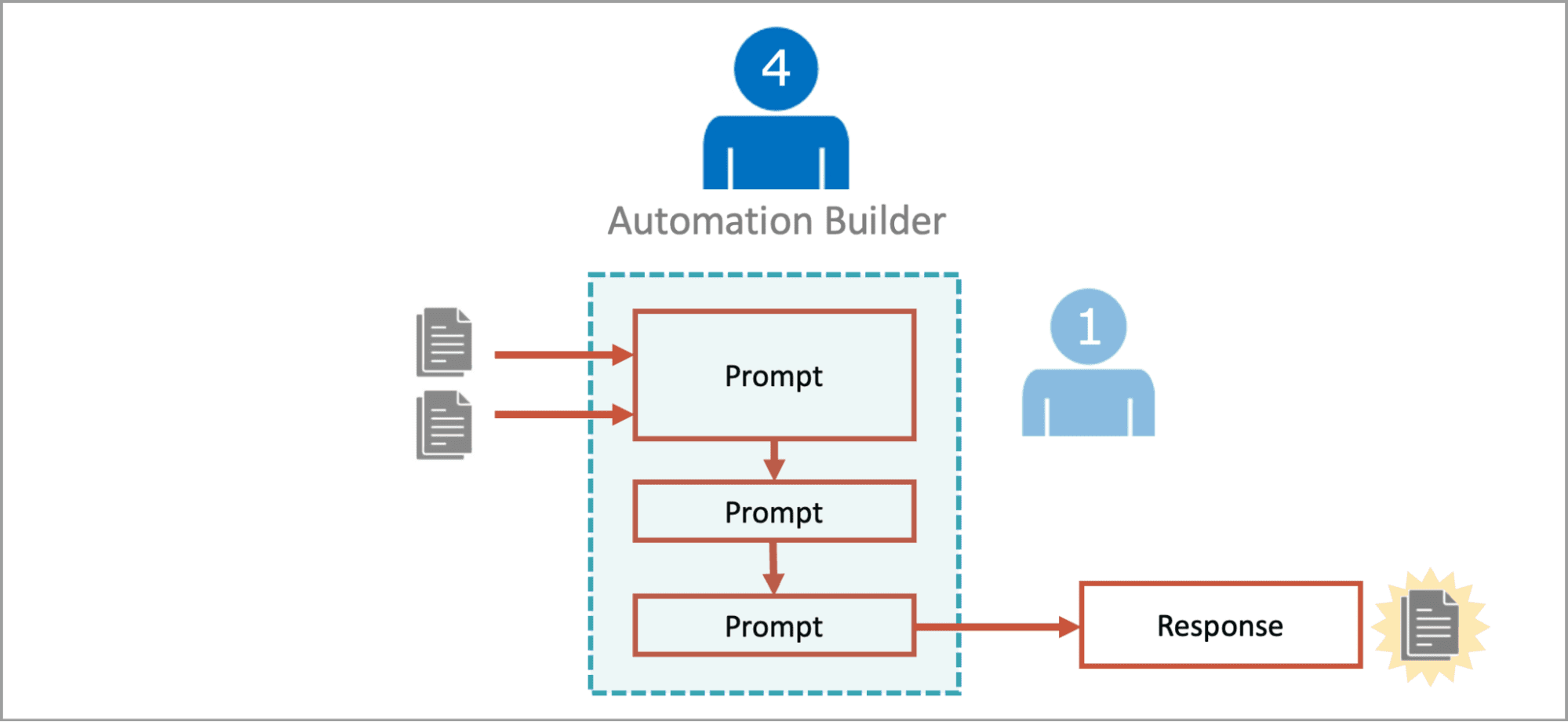
Each of us is on a transformational journey.
Or so they say in the AI communities, conferences and mastermind groups. In the bigger forums, this journey is described as an opportunity. But in small private groups, there’s more talk of disruption and job loss.
Do you see AI as disruption? Or opportunity?
The answer usually depends on your role and your industry. Those two things are hard to change. But it also depends on something else: your own artificial intelligence skills. That’s something you can definitely change. Each of us is in charge of our own skill set. We can all study, practice and experiment. We can all acquire new AI skills and guide our own transformational journeys.
What does AI proficiency look like?
Like any skill, it is learned in steps. You don’t achieve AI mastery all at once. You learn in stages. But what are those stages? What is the order? How best to acquire the skills that maximize opportunity and minimize disruption?
Here is a little roadmap for your journey toward AI proficiency. It shows that each of us has a clear path forward. It’s also a reminder that we are in charge of our careers. We are all empowered to take action. There are things we can do today to get to the next stage.
Stage Zero: The AI User
It started with a poem. It was springtime in 2023 and you heard that this new ChatGPT thing could write anything. So you tried it out with something fun, like song lyrics or poetry.
That first prompt was your first step. In that moment, you became an AI user.

Soon you were asking it for help brainstorming ideas and editing drafts. You discovered that AI is extremely versatile. But often, it’s not very good. Then again, you weren’t trying too hard. You were an ad hoc AI user.
Stage One: The AI Trainer
The first step on the path to AI proficiency is discovering new inputs and outputs. You start to give AI very detailed instructions.
You learn you can upload all kinds of training materials along with your prompts, such as reports, screenshots, personas, examples and style guides. You can ask it for all kinds of things, such as reports, drafts, strategies and images.
The better you train it, the better the responses.
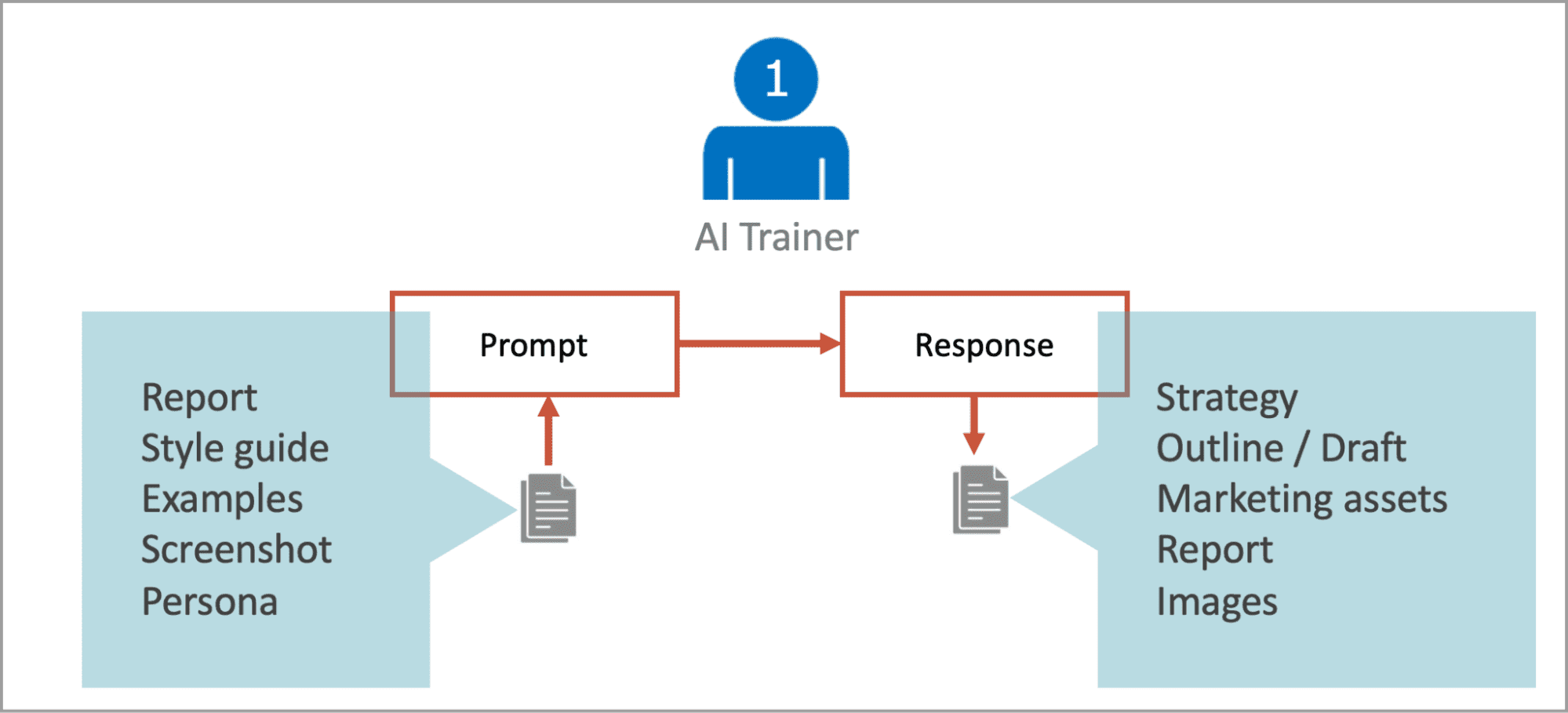
You discover:
- Giving the AI more context, training and detailed instructions gets you better responses.
- Giving AI information about your target audience (personas, ICPs) improves responses dramatically.
- Finding the right data to give the AI is actually more time consuming than prompting. Unstructured data needs to be cleaned up before you upload it.
Tips for AI Trainers:
- Look for “Export” buttons in all of your tools. Each one is really a “Generate training data” button for your helpful AI analyst.
- In ChatGPT, if the response is not good, you can scroll back up to your initial input and edit the prompt by clicking the pencil icon. When you edit a prompt (rather than writing a subsequent prompt) the results are often much better. Unlike your real-world conversations, in an AI conversation, you can take a step back in the conversation and change what you first said.
- If the response is good, you can ask the AI to give you a prompt to repeat the method again later. You’re ready for the next stage in your transformational journey.
 |
Nicole Leffer, CMO AI Advisor“The ‘edit prompt’ button is the most under-rated button in AI. Highly skilled AI users rarely chat back-and-forth to edit their AI responses. Instead, they look at the first AI reply and use it to identify where their original prompt left out key instructions or context, and then edit their prompt to add clarity and specificity to the original directions. This improves the quality you get from the AI, AND in the process, you learn how to become an even better prompter!” |
Stage Two: The Prompt Engineer
Now your confidence really starts to grow.
You learn what works well. When things don’t work well, you know why or you know how to find out. Often, the prompt needs polishing. What’s the best way to get a better prompt? Ask the AI itself. You soon discover that your initial prompt was somehow ambiguous or unclear.
You start improving your prompts, with and without help from AI, to see what works. You adjust your prompt… try it out… the response wasn’t great… adjust it again.
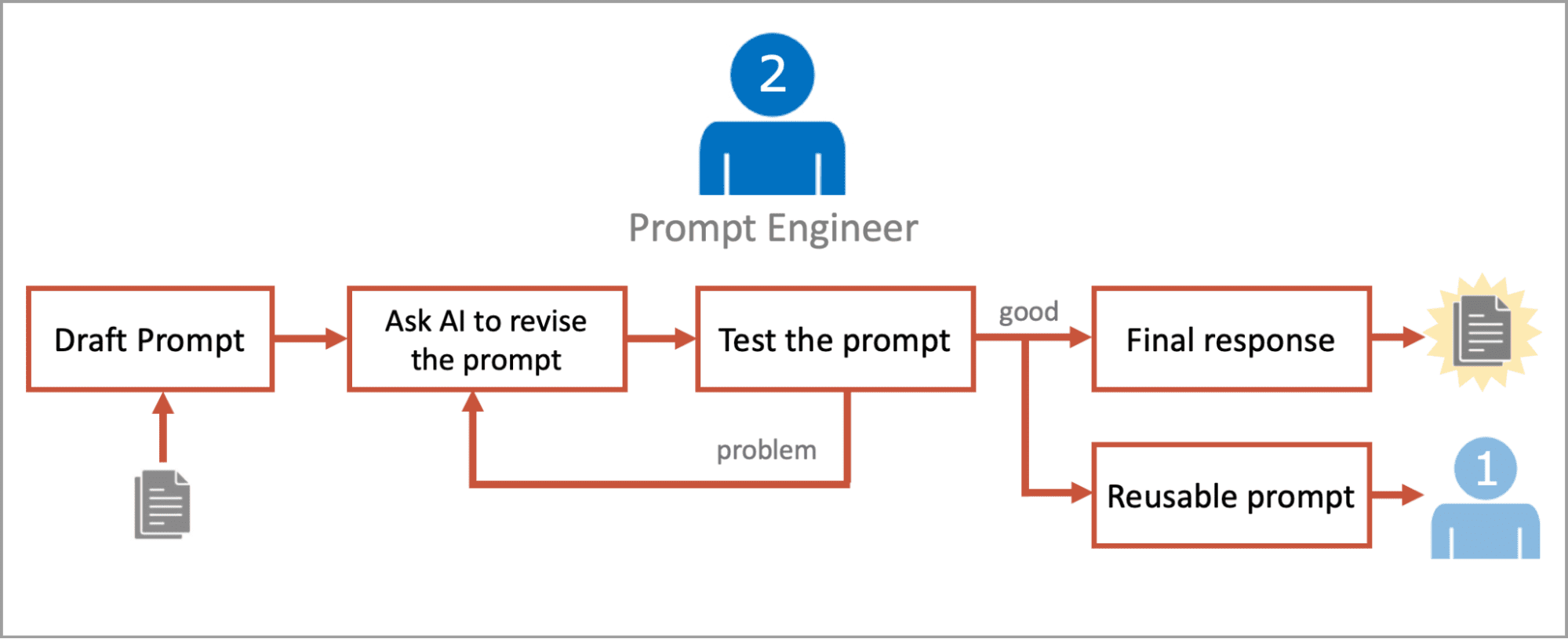
You suddenly realize that this process is really no different from coding and debugging. You have an engineer mindset. You are now a prompt engineer. And you do it all with English, not code.
“The hottest new programming language is English”
Andrej Karpathy, AI Scientist
If prompts are little tools, then they can be shared with others. Once it’s tested and validated, it can go into a central repository for other team members to use. You’re ready to start building your shared prompt library. This makes the “Stage One” team members around you more effective. You’ve improved the AI proficiency of your team.
You discover:
- Every prompt is just a draft. It’s not done until AI improves it.
- You need a shared prompt library to manage these prompts. But any tool will do: Google Drive, Evernote, Notion, whatever.
- You can give someone a powerful prompt but they still might not use it. Tech changes fast. Humans change slowly.
Tips for Prompt Engineers:
To improve any prompt prior to making an official prompt for your library, ask AI to improve it first. This codifies the prompt, improving the structure and clarity and making it more reusable.
Use this “Prompt Improvement Prompt”
Improve this prompt for clarity, consistency, and reusability. Your task is to revise the draft below so it performs reliably across different use cases. Focus on tightening the language, improving structure, and removing ambiguity. The final version should be easy for others to reuse.
[Paste draft prompt]
Here is one of my content strategy prompts, before and after I asked AI to revise it.
 To confirm that the revised prompt is better, I tested it. Here are the responses for both the original and the revised prompts. The difference is significant!
To confirm that the revised prompt is better, I tested it. Here are the responses for both the original and the revised prompts. The difference is significant!
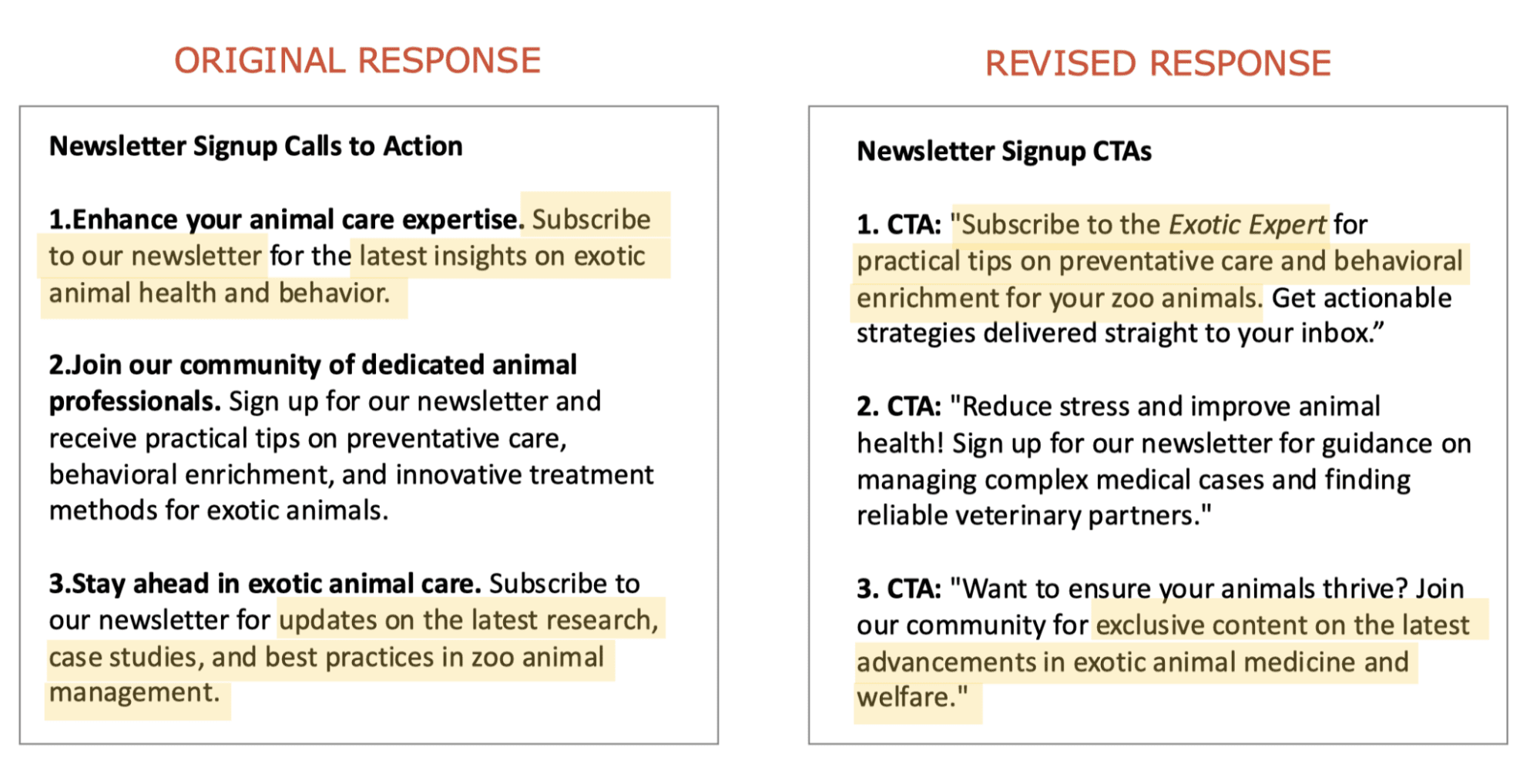
Test your prompts with various uploads and in various use cases. Try it many times, giving it different inputs and see if it performs consistently. If it works as expected 4 out of 5 times, it’s good enough for a beta release. Drop it into the library. Ask for input. You can always tune it up later.
Rachel Woods suggests that bad prompts have one of two problems. Each has its own fix.
- If the substance (what it says) is bad … add more context, fix your instructions
- If the style (how it says it) is bad …add response formats, examples and success criteria
“The fastest way to a great prompt is to write a bad one first, then fix what the AI gets wrong.”
Rachel Woods, CEO/CTO DiviUp Agency
Stage Three: The AI Process Developer
The next step is a big one.
Every job is a series of tasks. Every task is a possible opportunity for quality/efficiency improvements using AI. If a tested, reusable prompt is effective for a task, the Prompt Engineer moves on to the next task and looks for the next opportunity.
Soon an AI process appears. Multiple steps, in sequence, each have their own supportive prompts.
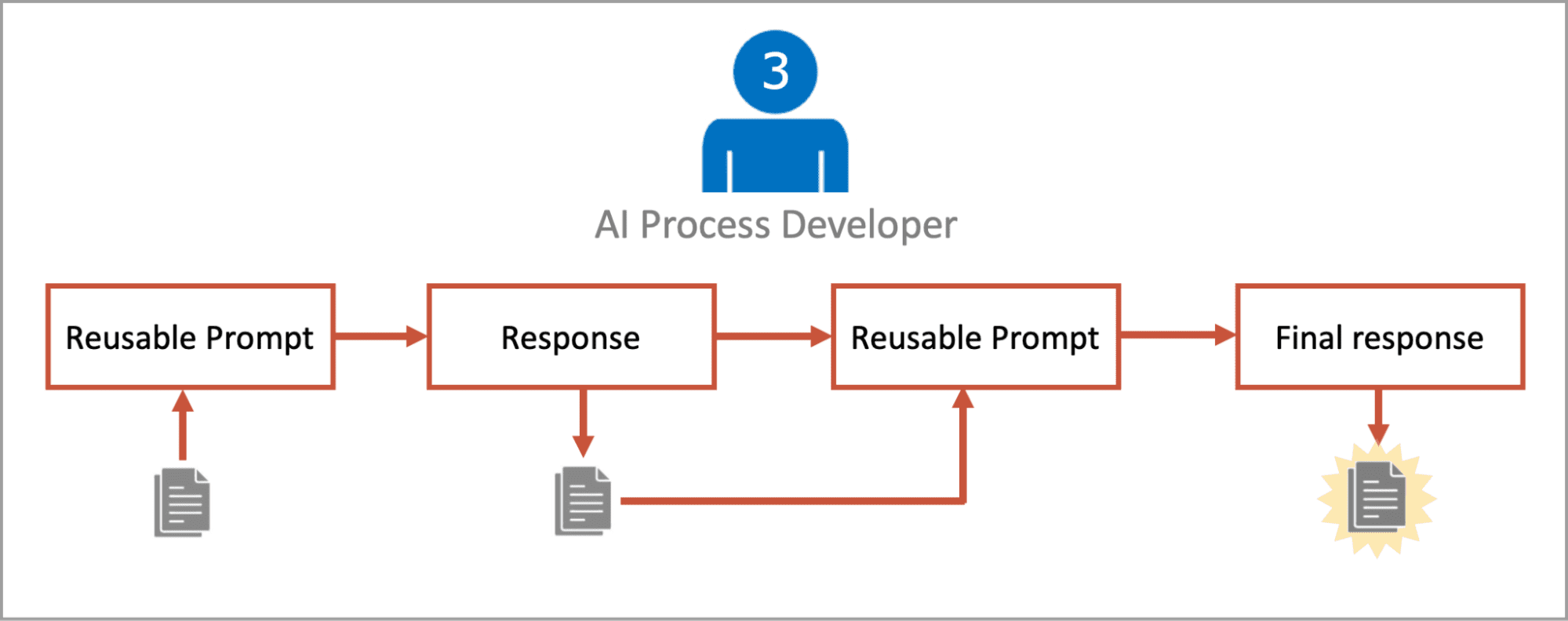
Start the task, open the library, grab the prompt, run the method, take the output, upload it to the AI with the next prompt, run the next method, and so on. Many steps may still be manual, but you are now discovering many more use cases for AI.
Your AI proficiency and confidence are rising. You aren’t disrupted. You see new opportunities everywhere.
You discover:
- Prompts can be added to a text expander tool and called up with a quick keyboard shortcut. No need to open up the library.
- Your reusable prompts in the shared prompt library go out of date eventually. Methods, models and inputs change. Prompts need upkeep. This is a new job.
- If you already have process documentation, the process goes much faster. Setting aside AI and just writing up your standard operating procedures (SOPs) may be the right place to start.
Tips for Process Developers:
- Don’t over-rely on generative AI. When a step in a process needs precision (calculations, look ups, data enhancement) generative AI is not ideal because it sometimes makes stuff up. Non-generative AI tools are far better for certain steps.
AI experts know that success starts with choosing the right tool for the specific result. Leah Berry says that using generative AI for precise tasks is like using a paintbrush to hammer a nail.
“When you’re using agents powered by LLMs, you’re tapping into creativity and flexible thinking, which is great for tasks like writing and marketing. But sometimes you don’t want creativity, you want precision and consistency. For repeatable tasks like invoicing or accounting, automation tools like Make or n8n are a better fit. They move data, generate files, and complete tasks reliably without introducing creative errors. Often, the best approach is combining both: use automation for structured steps, and use generative AI when you need creativity layered on top.”
Leah M Berry, AI Innovator
Stage Four: The Automation Builder
The next stage is a turning point. It’s a career changer. It’s where your confidence and value jump.
It’s actually very slow to copy and paste prompts one at a time in a multistep. Why not put them all together in an automation? Why not build a little Custom GPT (or Gemini Gem, or Claude Project) that runs them all in sequence?
This is just a logical progression from stage three. But if you haven’t gone through the previous stages, you are not ready for this stage. Just watch the process of building an automation, you’ll see it’s based on prompts that have been edited by the AI.

The joy of creativity has moved. You may be in marketing because you were passionate about creating a certain deliverable (design, copy, video, analysis). But you’ve discovered a new joy. You now get joy from creating automations that help with those deliverables.
You discover:
- If an AI automation doesn’t work, you are probably overloading one of the steps in the process. Break it down into smaller steps.
- In ChatGPT, any automation can be called anytime with the @ symbol.
- In ChatGPT, automations can be shared in a marketplace. Those automations can be trained to promote your brand with little ads and calls to action
- AI responses aren’t copywritable, but automations (and any prompts) are intellectual property. Who owns this automation you built? You? Your employer? It’s unclear.
Tips for Automation Builders:
- Automations are portable. If you keep the instructions and prompts in separate files (Google Docs or similar) you can easily move them from one AI model to another. Your Custom GPT can become a Gemini Gem in minutes. Just copy/paste in the instructions. Your instructions are code and the models are compilers.
Once you start building your own AI tools, you have a new perspective on off-the-shelf AI tools. You can imagine the prompts that power them. You are less impressed and more empowered. Imagine interviewing for a job in 2027…
Hiring Manager: We use Sparkbot AI to optimize our ad copy.
You: That’s a pretty good tool. But I like to run my own custom automations to validate it.
Hiring Manager: Wait… you write your own automations? Can you improve the automations we use??
Stage Five: The Agent Builder
This stage is the game changer.
An AI agent is just an AI that does things on the internet. If you haven’t heard (or said) the words “agentic AI” then get ready. It’s part of the modern marking lexicon. AI agents do things that standard prompts and automations can’t do. Tasks can be scheduled. Reports can be written. Files can be sent.
- Gather and enhance data
Scrape competitor pricing, find social users who engaged, track the reputation of brands, identify new influencers - Schedule and publish
Post directly to social media, WordPress, YouTube, etc. - Identify low performers and adjust
Regularly read reports, generate a summary, write up the recommendations, email the suggest improvements to the marketer
The marketer who builds agents is in another league. They aren’t just secure in their job; they are in high demand.
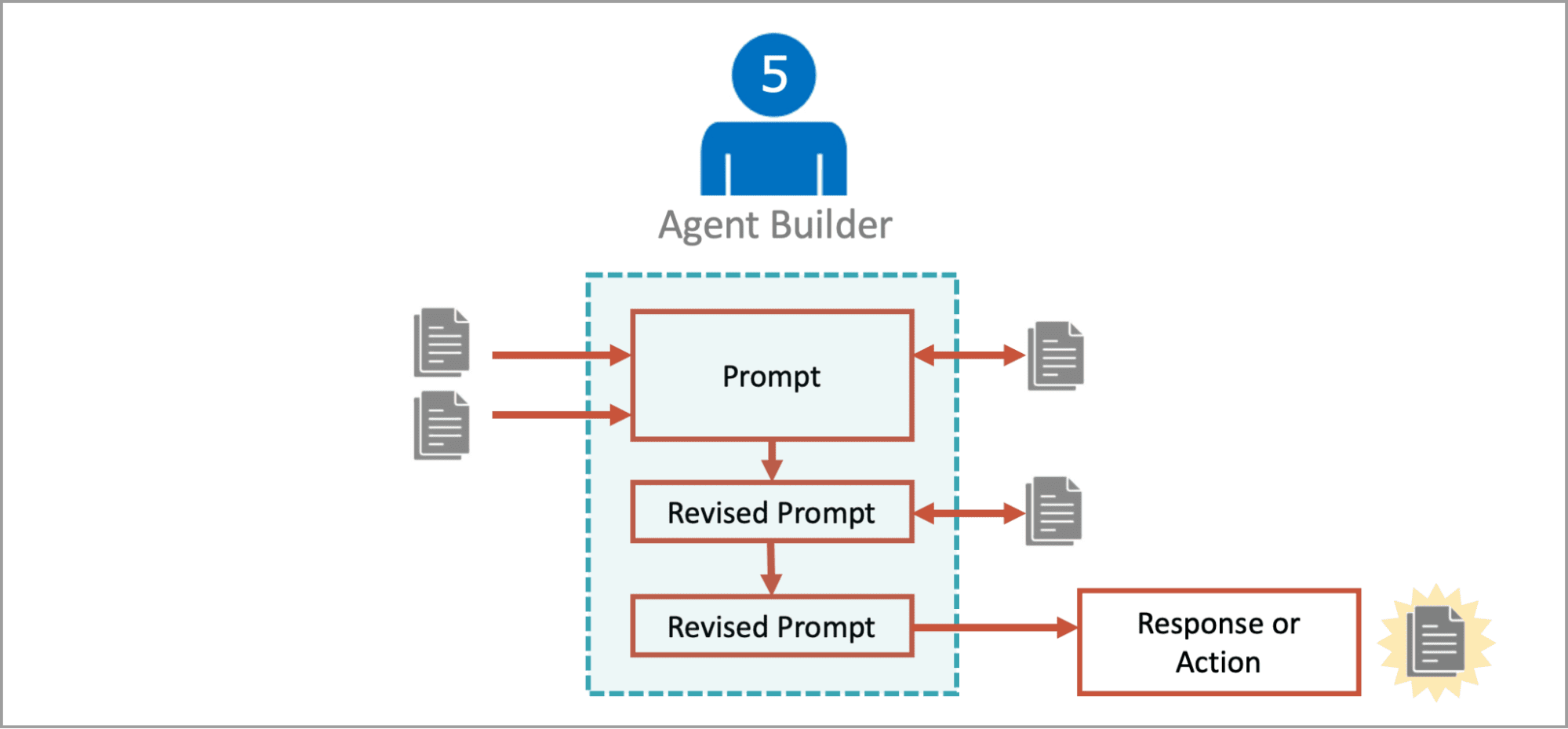
You discover:
- You don’t need all of those software subscriptions. Agents do SaaS jobs.
- You always need more and better data. Great inputs are the key to great outputs.
- Friends share agents with friends. Rivals guard their agents fiercely.
Tips for Agent Builders:
- Agent building tools make building things easier. Clay, Make, n8n and AgentGPT connect all the dots for you.
- Running agents gets expensive. You pay by the token so it’s time to make things efficient. Don’t ask for more than you need and don’t use an LLM if you don’t have to. Use a simpler API, a lookup or run an LLM locally on your machine whenever possible.
Stage Six: The Agentic AI Manager
It’s such a common prediction, it’s almost a prophecy.
The marketer of the future will oversee a team of agents, each with its own use cases, training and data sources. They work together within a demand generation machine.
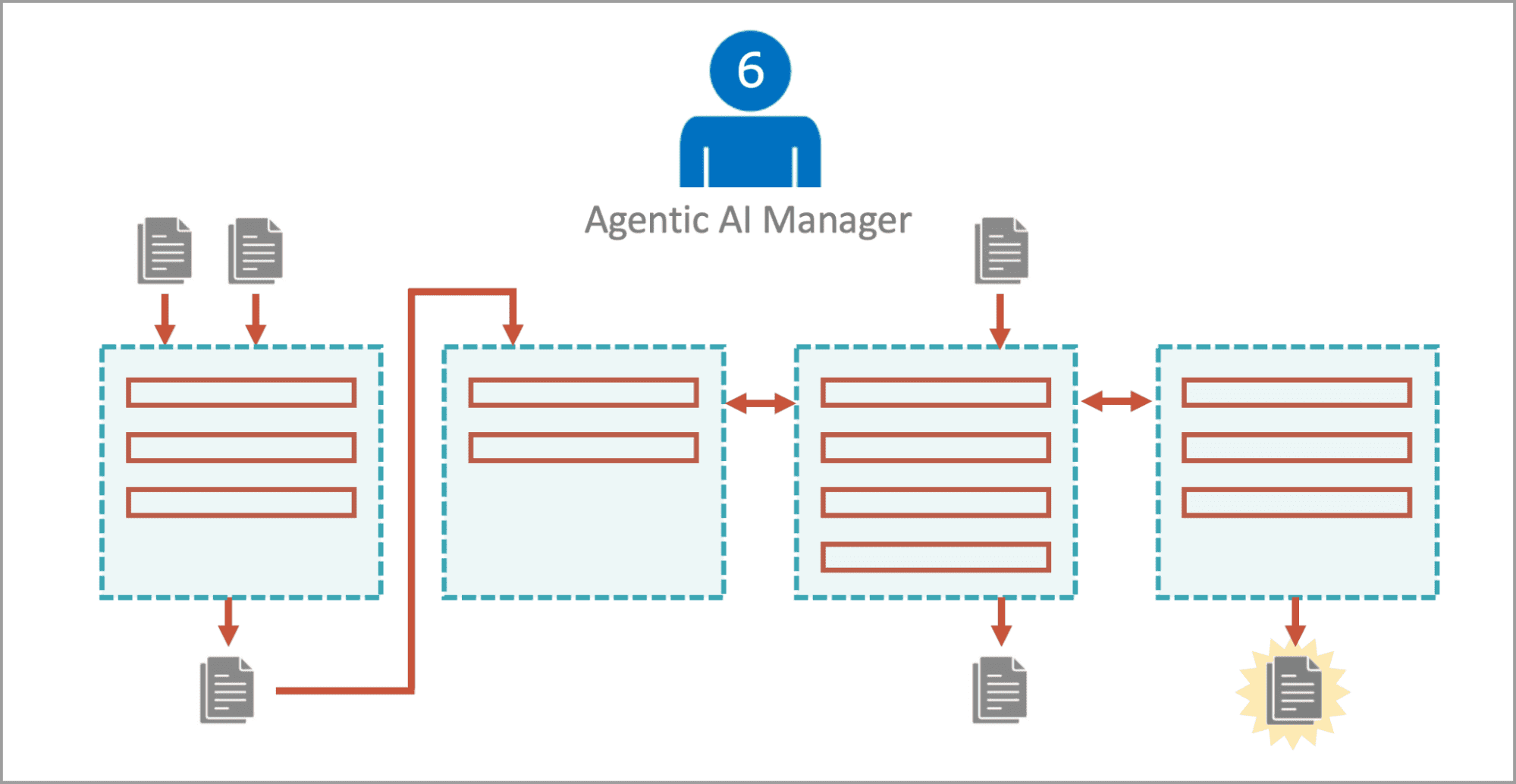
You discover:
- Data is agent fuel. You are always on the look out for newer and larger data sources.
- Monitoring is key. You get notified if any agents are running hot (incurring high costs because it’s using tons of tokens)
- The line between marketing and sales disappears. Brands don’t actually want marketing, they want demand and leads. Agents bridge sales/marketing gaps. They don’t just deliver MQLs, they directly support sales activity. They show reps how best to respond to the lead.
- AI has limits. Big visionary ideas still win for brands. And performance marketing doesn’t work well without brand marketing.
From disruption to opportunity
We are each on a journey that is both personal and professional. What is your relationship with AI technology? Are you disrupted? Or is AI an opportunity?

The answer really depends on your stage in AI proficiency. Your skills determine your place in the marketplace. And you are in charge of your own skillset. We are each in charge of our own careers. Don’t wait for someone to train you. You have the same access to the tools as everyone else.
Extend this model to teams
What are the stages of proficiency for a team? Is your marketing team on a transformational journey? Are team members sharing knowledge, prompts and tools? What happens when there are new ideas and methods?
Extend this model to businesses
What are the stages of AI proficiency for a business? Is your business on a transformational journey? What is the approach to training? Are there policies and governance? Is any data source allowed? Are innovators rewarded?
Our imaginations are being tested
I can’t fully picture what happens next. Certainly, the tools and methods will diffuse through the workforce and become ubiquitous. Even as I write this, the AI within Google Docs is offering to help me write (no thank you). We can’t change the pace of technology, but we can decide for ourselves what to do at this moment. What will you study? What will you build?
What’s next? Is there a seventh stage?
Let’s ask AI thought leader, Chris Penn. He’s always good for a candid answer.
 |
Christopher Penn, Trust Insights“When the Lamb opened the seventh seal, there was silence in heaven for about half an hour… Oh, the seventh level of this framework is the agentic strategist. With every step, the human being moves farther and farther away from the execution of AI, from the doing of AI. We move from being copy paste monkeys to being conductors of the orchestra. The seventh level is where you have agentic AI that builds itself. It’s no secret that tools like make, n8n, etc. all have programmatic input and output. The seventh level is when AI manages itself, building its own agents, optimizing its own workflows. We humans are there to set the grand strategy and then we go get coffee as the system figures itself out. You can already do this today to a surprising degree. It’s quite unsettling to watch.” |

















































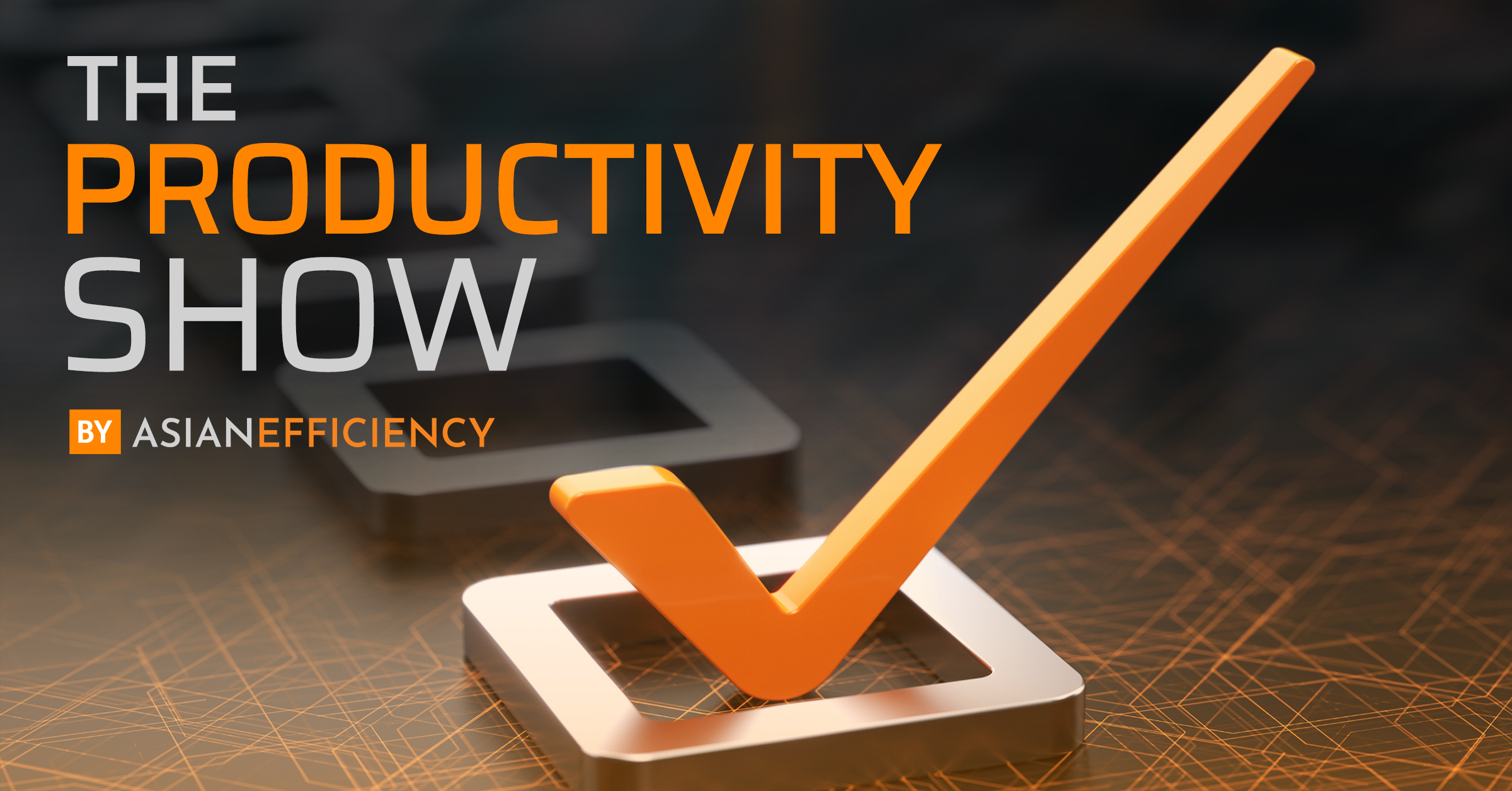













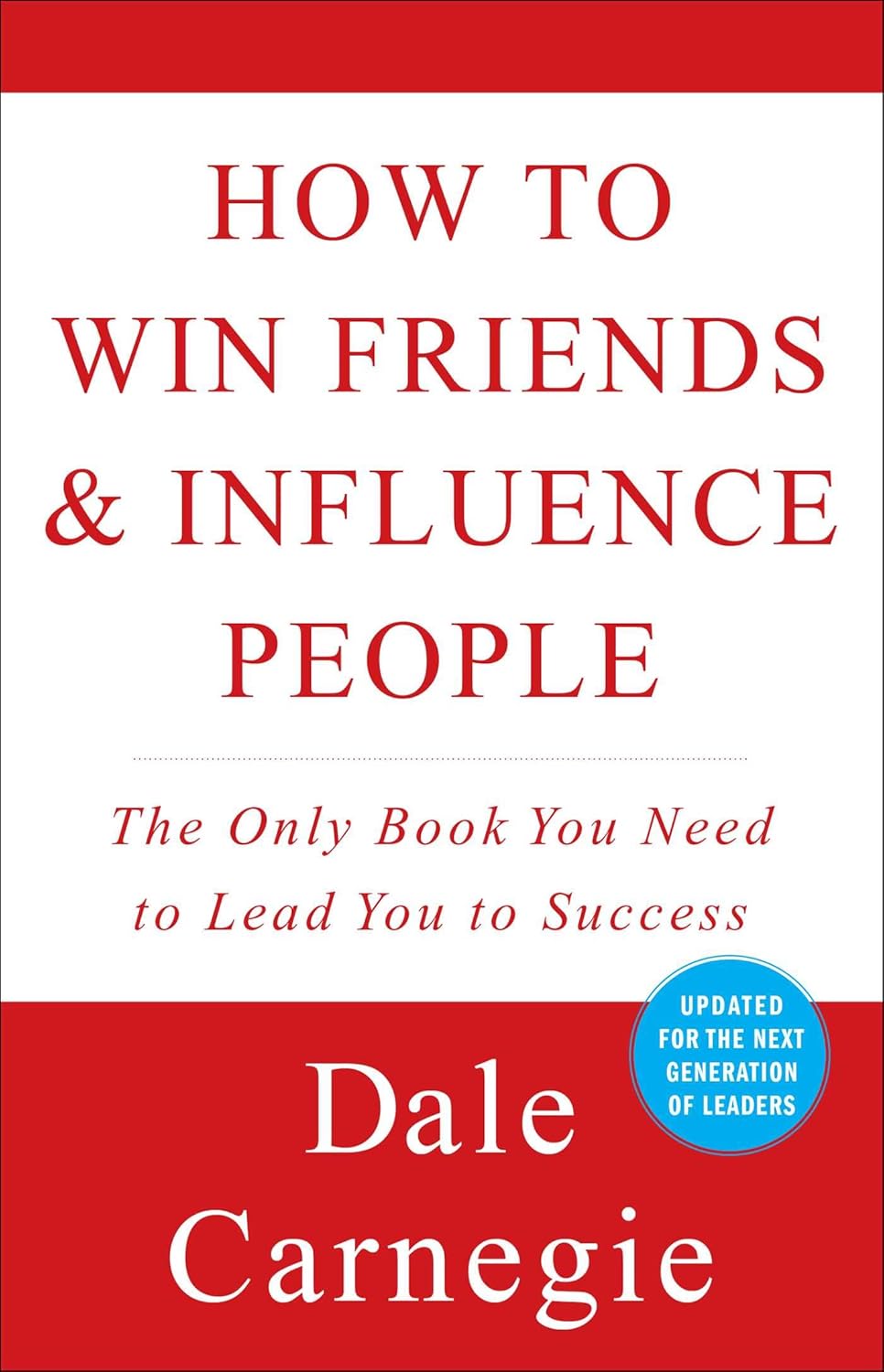




















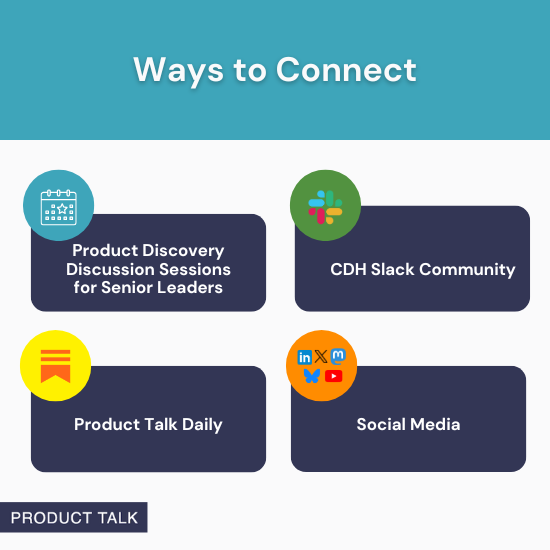

















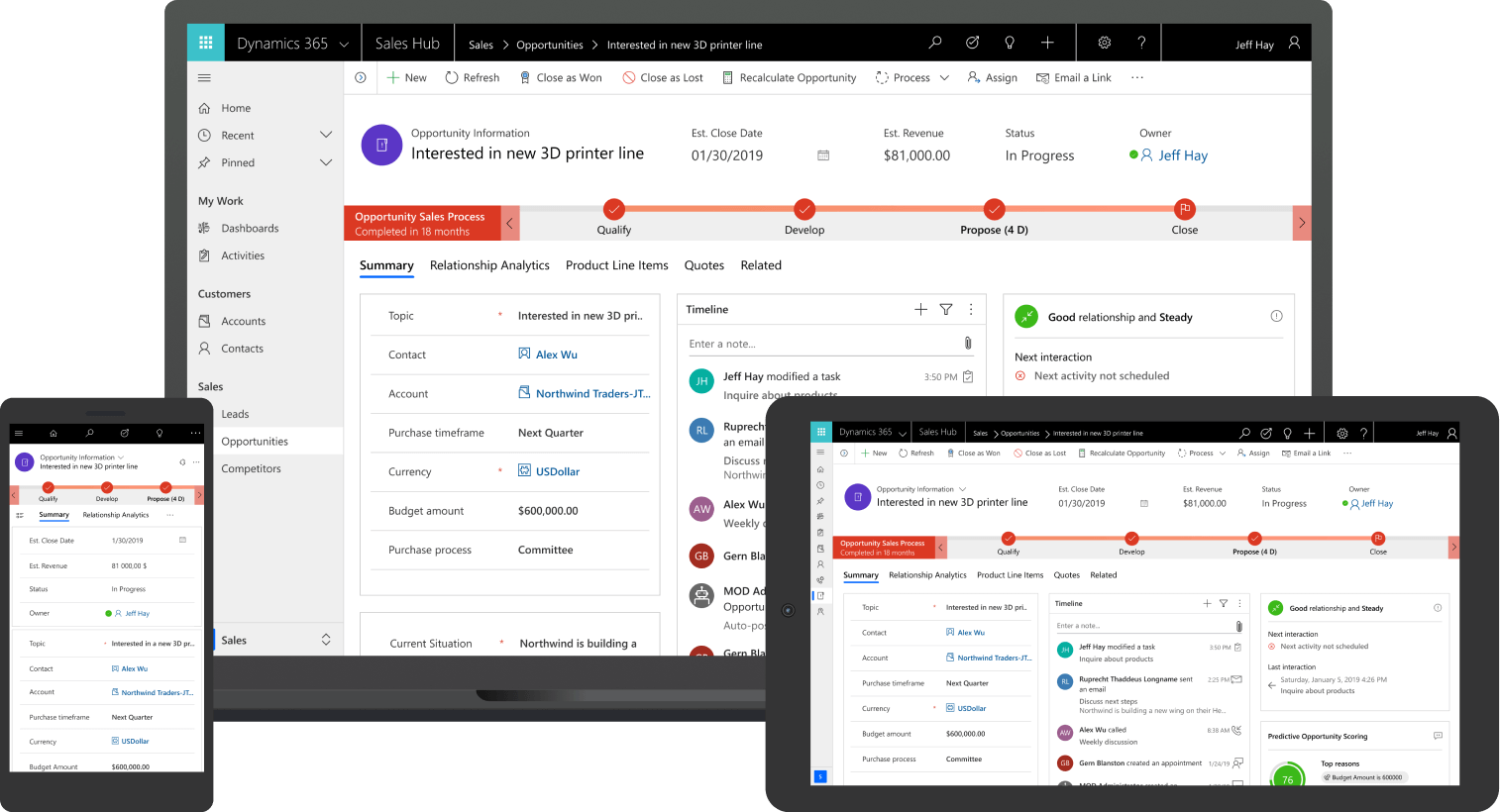
![Building A Digital PR Strategy: 10 Essential Steps for Beginners [With Examples]](https://buzzsumo.com/wp-content/uploads/2023/09/Building-A-Digital-PR-Strategy-10-Essential-Steps-for-Beginners-With-Examples-bblog-masthead.jpg)










